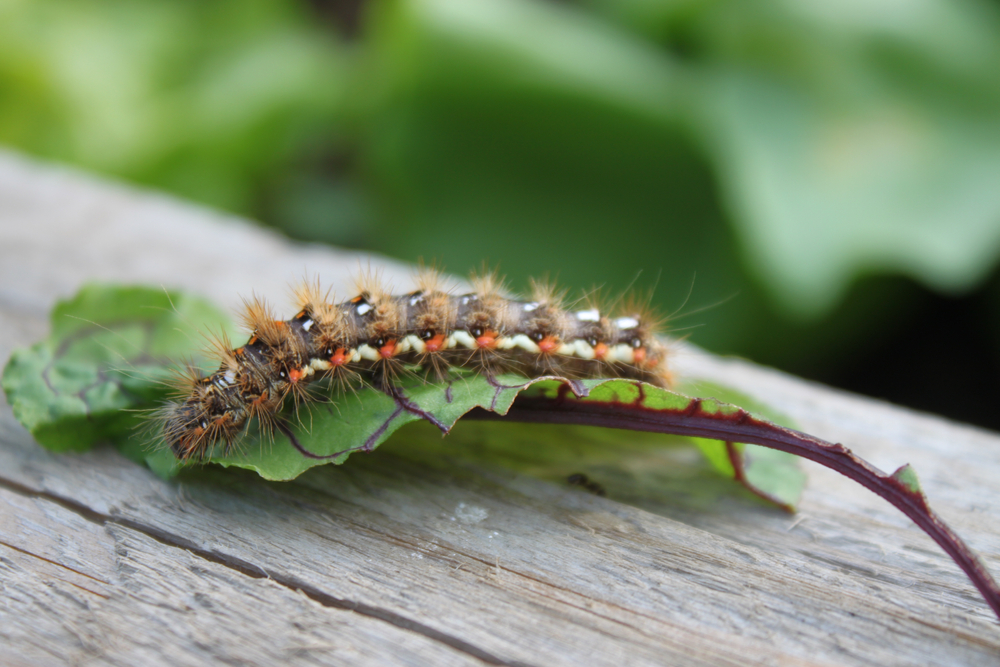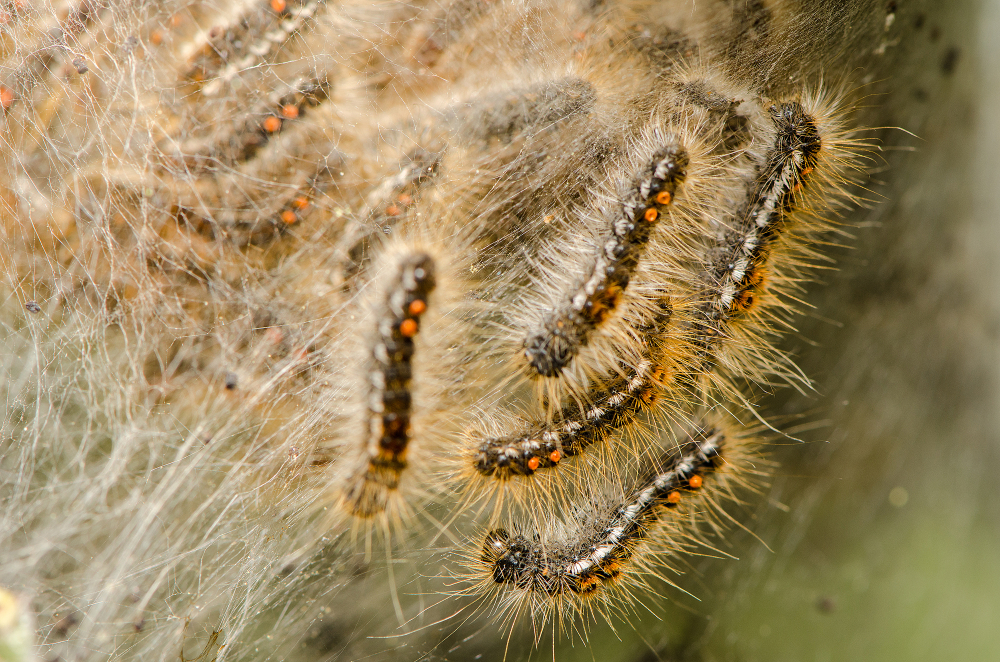If You Live Here, Prepare for a Poisonous Insect Infestation

For many people lately, it’s impossible to go outside without being reminded of the swarms of Brood X cicadas that have emerged from the ground in overwhelming numbers. For others, the return of warm weather has brought back painful encounters with pests like mosquitos or fire ants. But if you live in a certain part of the U.S., you should prepare yourself for another type of poisonous insect that is set to infest some areas in record numbers. Read on to see where the latest bug boom is taking place.
RELATED: If You Live Here, Prepare for a Mosquito Invasion Like You’ve Never Seen.
Maine and Massachusetts are experiencing an infestation of poisonous browntail moth caterpillars.

Residents in parts of New England may want to be on the lookout: Maine and Massachusetts are currently home to an infestation of the poisonous browntail moth caterpillar. Health officials are warning that the invasive species are covered in hairs that can cause painful rashes or breathing problems and that the public should avoid all contact with the bugs.
“People are finding them everyplace: on the ground, on the picnic table, on the electrical box, on the corner—you name it,” Jim Britt, a spokesman for the Maine Department of Agriculture, Conservation and Forestry, told The New York Times. “They are heavily present. Folks will see them all over.”
A warm spring is likely to blame for the infestation.

While the bugs are a common nuisance found along coastal Maine and throughout Cape Cod in Massachusetts, Britt says that all 16 of Maine’s counties have reported an infestation of the bugs reaching far inland. Forestry officials said a warmer than average spring likely caused the caterpillars to begin pupating earlier than usual, prompting the Maine Center for Disease Control and Prevention to declare the bugs a public health nuisance during their active period between April and June.
“Generally speaking, this year will be as bad or worse than last year in terms of potential encounters with browntail moth,” officials at the department said. “Browntail moth populations in Maine have been in an outbreak phase since 2015, and populations last year continued to increase.”
RELATED: If You Live in These States, Don’t Drive With Your Windows Down, Officials Warn.
The caterpillars can leave their poisonous hairs behind long after they’re gone.

If you come into contact with the bugs—which are dark brown and about 1.5 inches long with white stripes along their sides and two reddish-orange dots on their backs—officials warn that a painful red, itchy rash similar to poison ivy can develop that lasts for anywhere from hours to weeks. But even if you don’t see or touch one of the caterpillars, the poisonous hairs they leave behind on surfaces can be picked up in the wind and inhaled, causing breathing problems that can be “serious.”
Officials recommend that anyone doing yard work such as raking should wear masks, goggles, and coveralls to protect their skin and suggest working on wetter days to avoid stirring up the hairs. They also suggest rinsing off in a cool shower and changing your clothes after coming inside from an area where the browntail moths are present, as well as rinsing down picnic tables and outdoor furniture before using them.
Over-the-counter lotions can help treat the painful rashes.

Officials advise anyone who has a serious rash that won’t go away or develops serious breathing issues to seek medical attention. But fortunately, they also report that some people aren’t affected by the caterpillar’s toxic hairs. “They were everywhere, and I had absolutely no reaction to them,” Britt told The Times.
If you do find yourself itching, there are some simple ways to treat the symptoms. “Any sort of antihistamine will help,” Christine Cattan, a pharmacist at Bangor Drug Company, told the Bangor Daily News. “I also recommend people use a nice hydrocortisone cream with aloe to soothe the irritation.”
RELATED: If You See This Bug, You Need to Vacuum It Up Immediately, Experts Say.